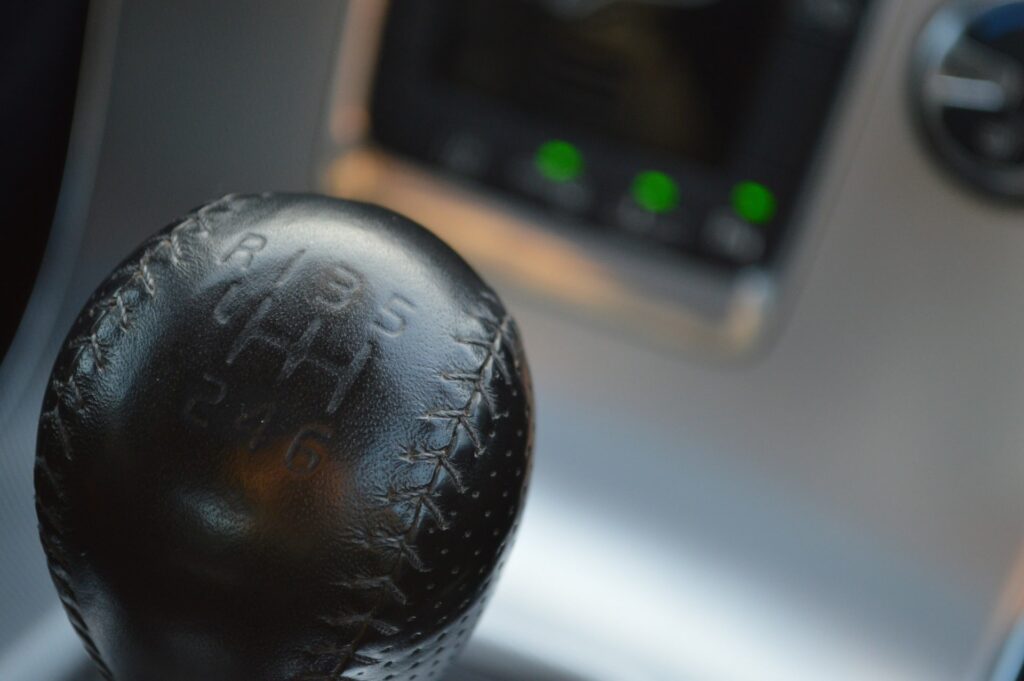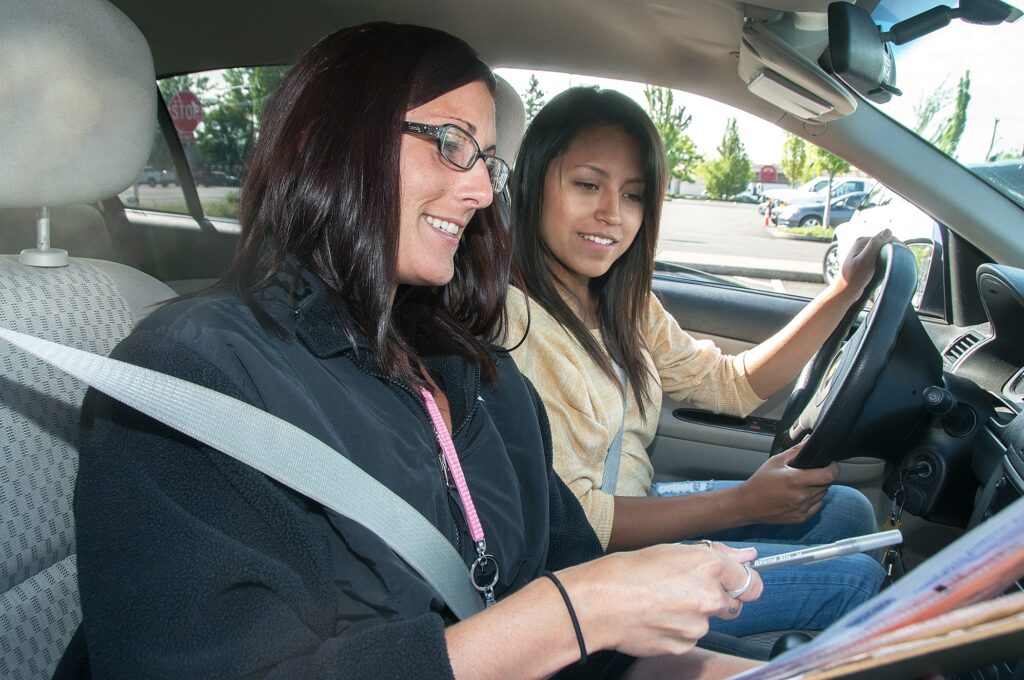Recent figures from the Irish Road Safety Authority show that approximately 48% of candidates fail their driving test each year. Here are the top eight reasons why people fail the driving test in Ireland.

According to recent figures, almost half of all driving tests conducted in a single year are failed. So why is this figure so high, and what are the reasons behind it?
What mistakes are continuously being made at every test centre across the country, and how can this article help you to not make the same mistakes as 48% of test candidates throughout Ireland?
Firstly, let’s take a look at a few of the RSA driving test centre pass rates starting with the lowest:
1. Raheny test centre: 38.7%
2. Kilkenny test centre: 43.8%
3. Finglas test centre: 45.8%
4. Mulhuddart test centre: 49.5%
5. Tallaght test centre: 50.1%
6. Dundalk test centre: 50.7%
7. Naas test centre: 53.9%
8. Skibbereen test centre: 58.8%
9. Tuam: 63.9%
The overall pass rate for all 51 driving test centres combined is 52.4%.
- Recent figures from the Irish Road Safety Authority show that approximately 48% of candidates fail their driving test each year. Here are the top eight reasons why people fail the driving test in Ireland.
- A rundown of Meanwhile in Ireland’s top tips for passing your driving test
- So what’s going wrong and why are nearly half of all test candidates failing?
- The Driving Test Marking Sheet explained – 18 factors that will help you ace your test
- Failure of the driving test arises when an applicant receives the following:
- So why are candidates failing?
- 8. Failing to react properly and promptly to hazards – keep an eye on the road ahead
- 7. Observation – a glance is not enough
- 6. Positioning – stay in the centre of the lane
- 5. Clearance – leave enough room for other road users
- 4. Progress – slower does not mean better
- 3. Vehicle control – stay in control of the vehicle at all times
- 2. Reversing – don’t make these common mistakes
- 1. Lack of general preparation – don’t leave everything until the last minute
- Your questions answered about why people fail the driving test in Ireland
A rundown of Meanwhile in Ireland’s top tips for passing your driving test
This article outlines why people in Ireland have failed their driving test, so here are five short tips from Meanwhile in Ireland to help you pass your next go:
- The best thing you can do in the build-up to your driving test is to practice regularly! Get behind the wheel as often as you can, even getting a relative to take you out on top of your driving lessons.
- Learn the rules of the road. These can be monotonous and boring, but they can help you on your way, and will help you when on the road.
- Always observe the most fundamental observation techniques, by checking mirrors and blind spots.
- If you know where the test area is going to be, have a go at driving round it! This will familiarise yourself with the area and will help you feel more prepared on the day.
- Lastly, stay calm. Nerves can be your biggest enemy on the day. Remember the amount of practice you have done and focus on this drive.
So what’s going wrong and why are nearly half of all test candidates failing?

We are going to go through our top eight reasons the pass rate is so low in Ireland, but before we do that you need to understand what the driving test marking sheet is and what is on it.
This sheet is what the tester marks on their digital tablet as you are on your driving test. Understanding this sheet is the first step to getting a better result on your driving test.
The Driving Test Marking Sheet explained – 18 factors that will help you ace your test
On this marking sheet, you will see 18 headings. These are:
1. Rules of the road
2. Position
3. Observation
4. Reaction
5. Mirrors
6. Clearance
7. Signals
8. Motorcycles
9. Courtesy
10. Alighting
11. Progress
12. Vehicle controls
13. Adjust speed
14. Comply with traffic controls
15. Yield right of way
16. Reverse
17. Turnabout
18. Parking
The sheet is also colour coded to show grade one faults in green, grade two in blue, and grade three in pink as can be seen here:

Failure of the driving test arises when an applicant receives the following:
1. Nine or more grade two faults throughout all sections.
2. Six or more grade two faults in the same section.
3. Four of the same grade two faults for a single aspect.
4. One or more grade three for potentially dangerous driving.
The driving examiner marks from the RSA driving test marking guidelines and is highly trained at assessing driver faults. These guidelines assist the examiner to grade accordingly in the relevant section and mark the fault in order of severity into grade one, two, or three.
So why are candidates failing?
8. Failing to react properly and promptly to hazards – keep an eye on the road ahead

There are many different types of hazards to be aware of when driving, such as weather, static hazards, and moving hazards, so it is important to always keep your eyes on the road.
The time it takes you to react to these is vital in terms of showing the examiner how you see the road and hazard ahead. That could be a ramp, roundabout, parked car, pedestrian, or anything that causes a change to your on-road circumstances.
The examiner is looking for your technical ability and smooth car control when dealing with whatever hazards present along the way.
7. Observation – a glance is not enough

Poor or improper observation moving off, turning right, turning left, on roundabouts, undertaking a turnabout, or reversing around a corner are some of the main reasons people fail the driving test in Ireland.
The marks you lose here are for failing to take effective and adequate observation while at a junction and while leaving it. Not checking correctly over the right shoulder moving off is another mark – and remember to make it obvious, just a glace is not good enough.
Open and closed junctions in housing estates are where people get caught out because they don’t take adequate time to properly view the road before entering it. Just because it says “yield” doesn’t mean you shouldn’t stop to look properly.
Read: Have a laugh and watch this hilarious Irish mammy give her daughter a driving lesson
6. Positioning – stay in the centre of the lane

Pupils can develop poor positional sense over months and years of doing it their own way.
We see pupils driving too far over to the right dividing white line and getting marked for position on the straight.
Some others swing wide on left turns, or cut or swan neck the right turns. Incorrect lane position on the approach to roundabouts and poor positioning while on or exiting the roundabout is another positional mark grade two.
5. Clearance – leave enough room for other road users

Not giving enough room to pedestrians, cyclists, stationery vehicles, or other objects generally arise from a candidate driving too fast or too close to parked cars or cyclists where the gap is insufficient to pass safely and under control.
When the gap that you are trying to fit through is not big enough, this also forces the oncoming driver to alter their position on the road. These marks can easily be assigned as grade three if the clearance is so tight that it’s dangerous.
4. Progress – slower does not mean better

Essentially this means you are driving too slow or too cautiously. Some candidates think the slower they drive, the better the tester will think they are. This is not the case.
Driving too slow causes frustration among other drivers and can have the effect of forcing drivers behind to overtake erratically or make unnecessary manoeuvres.
Going over ramps and not increasing your speed immediately after is an example of a progress fault on the straight.
Driving at 30 km or 40 km per hour in a 50 km per hour zone, or taking too long to emerge out of a T-junction while turning left and right, or while going around a roundabout, will all accrue a mark for progress.w
WATCH: HILARIOUS Irish guy on his driving test – might help explain why he failed!
3. Vehicle control – stay in control of the vehicle at all times

Inexperienced or new drivers commonly get marked down for vehicle control, and this is one of the reasons so many people fail the driving test in Ireland.
Clutch coasting or over accelerating, changing down gears without releasing the clutch each time they change, no handbrake use, stopping in the wrong gear, poor steering control while changing gears, or allowing the wheel to spin back will all get you marked down for vehicle control.
Harsh braking is another mark, as is rough or erratic clutch control changing up or down gears.
2. Reversing – don’t make these common mistakes

Not executing the reverse with adequate observation or with overuse of the left wing mirror will get you marked down.
Most candidates take the manoeuvre too wide or think they have to be inches away and end up too close. Overall coordination takes time and practice, but the big mistake on this is that most do it too fast.
This should be done at a crawling pace while taking proper observation at the same time.
1. Lack of general preparation – don’t leave everything until the last minute

Number one on our list of reasons people fail the driving test in Ireland is their failure to properly prepare.
We now have an eight-month waiting list to get a driving test date, and we still get pupils contacting us a few days before the test. Leaving it so late is very foolish as it is proven that those who prepare well in advance are the more successful candidates.
If we have time to advise you of what you are doing wrong, then you have got time to fix the issues we have flagged. On top of trying to improve poor driving if a candidate has been driving improperly for 10, 15, or 20 years, there may also be issues with the learner permit or NCT on the car.
Attempting to fix these issues within days or hours of your test is not the smartest approach and needless to say, it doesn’t work.
For anyone who has a driving test coming up, it’s advisable to source a reputable instructor who knows what they are doing and has a five-star online reputation to prove it.
If you understand the driving test marking sheet and the above eight reasons why people are failing, then you will go a long way to changing the poor National pass rate statistics.
Go to nationaldrivingschool.ie for more information and tips on passing the driving test.
Your questions answered about why people fail the driving test in Ireland
If you have read our article on the reasons why people fail the driving test in Ireland and still have some questions, not to worry! For in this section, we have you covered, as we have compiled some of the most frequently asked questions about this topic.
Is it hard to pass driving test Ireland?
Passing your driving test in Ireland for the first time is never easy. It will require a lot of preparation and a need to avoid the mistakes above! But it is very doable on the first go if you have had enough lessons and prepared properly.
How many people fail their driving test Ireland?
In 2022, figures have shown that the average pass rate across all centres was 53%, meaning 47% of people fail their tests in Ireland.
What percentage of people fail their driving test first time in Ireland?
Similar to the above, and it has historically been between 30-40% of people.
What is the biggest reason for failing a driving test?
Some of the main reasons why you would fail a driving test include: not looking in both directions, emerging into oncoming traffic, or failing to complete any observation when at an unmarked crossroad. If you come to contact with these people, you may end up using the aggressive fist, one of the Irish hand gestures you’d better get right!
Legal Disclaimer
We cover articles relating to many activities. Some of our articles showcase gaming and gambling as activities. While we do not take money for bets or own any gambling venues, we feel it is important that our readers know the risks of such venues or sites that we may mention in our articles. Gambling involves risk. Please only gamble with funds that you can comfortably afford to lose. See our legal disclaimer for more info.
Sponsored Content Disclosure
This article is a sponsored feature, and all content and links contained within should be considered promotional in nature. Unless explicitly stated otherwise, links included in this article are to be understood as sponsored. If you are interested in promoting content on our website, kindly refer to our contact page to arrange the elevation of your brand’s visibility.

